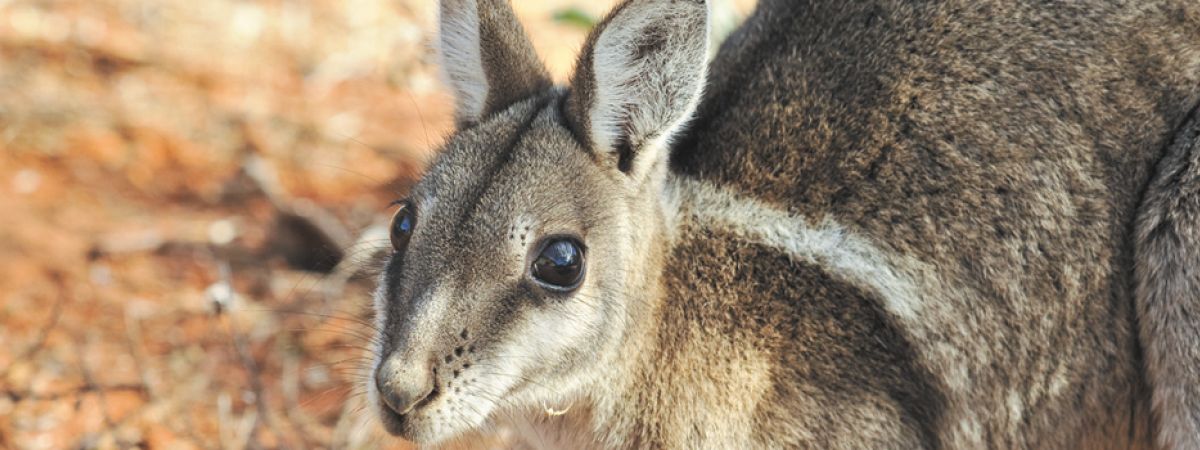This essay is an investigation into Australia’s efforts to protect its endangered species from extinction. It focuses particularly on the effectiveness of the federal legislation dealing with species officially recognised as being under threat, but it also takes a broader view. How effective, for example, have been state and federal efforts to preserve biodiversity by setting aside national parks and nature reserves? Why are species still becoming extinct, even though tens of millions of dollars are being spent to protect nature? And what more needs to be done to prevent extinctions?
As I researched these issues, I grew increasingly dismayed at how haphazard and generally ineffectual our efforts at preventing extinctions have been. In the twenty years since federal legislation was enacted, just one vertebrate species has increased in number sufficiently to be taken off the threatened list: the saltwater crocodile. Dismayingly, I also discovered that many conservative state governments are rolling back protections for nature, and that the worst are using aspects of our natural heritage as political bargaining chips. Yet some organisations and initiatives are making progress in protecting species – even bringing some back from the brink of extinction. Using them as models, I outline how private–public partnerships could conserve Australia’s biodiversity effectively, and at a modest cost.
Australia is not alone in experiencing an extinction crisis. Many of our regional neighbours are in danger of losing their most distinctive species. I believe that Australian expertise could play a leading role in biodiversity protection regionally, and that a federal fund should be established to facilitate this.
Writing this essay has made me look at my society anew. Eighteen years ago I wrote The Future Eaters, which raised some of the issues discussed here. How much progress has been made towards sustainability since then? To answer that we need to revisit this essay’s epigraph. When I first read Sir Keith Hancock’s words, they seemed to leap from the page and sear themselves on my mind. Was ever a national narrative so perfectly distilled? Hancock’s words capture the trajectory of all settler societies since the dawn of civilisation, but are particularly apt for Australia, where the mismatch between land and people was so profound, and the experience is still so raw.
I’ve spent my life in a country which looks upon its fine tricks and hustles of nature as some of its greatest achievements. We crow about them on the front pages of our newspapers, and look upon some as inexhaustible sources of wealth. But in reality we Australians are mere squatters in our own country. That is all we ever can be until Australia has completed its experiment. Moreover, our tenure in this land is limited not by some governor’s pleasure, but by the rate at which we destroy its natural riches, including its species.
The great majority of Australia’s plants and animals are found nowhere else on earth. Many are the result of 45 million years of separate evolution, for that is how long Australia has existed as an island continent. As a result, many Australian species are precious repositories of unique genes and evolutionary strategies, living in unique ecosystems. They are important not just in and of themselves, but because they provide Australians with the best means we have of engaging nature and listening to our land.
By learning about our homeland and adjusting our beliefs, values and practices, we can achieve great things. Indeed, over the past half-century, significant progress has been made in both caring for the Australian environment and in placing our culture on a more sustainable path. Yet in recent years things have begun to go backwards, as the concept of practical, measurable environmental protection has been widely neglected – even abandoned in some instances. I believe that two things – a lack of awareness of the severity of Australia’s environmental problems, and the increasingly divisive, ideologically driven nature of our politics – are primarily responsible for this.
Although Australians profess to love their wildlife, there is an ever-growing sense among many of our politicians and business leaders that the natural world is something to be traded off – just another item in a ledger, or a criterion to be partially satisfied. This was highlighted to me recently in Kalgoorlie. I was talking to a group of school kids, one of whom asked me why trees were being knocked down to make way for new mines. When I responded that it was happening because our society values money more than Australia’s natural habitats, an employee of a major mining company objected that this was not true. So I asked him what he would do if he discovered Uluru was rich in gold ore. After a moment’s thought he replied: “Come up from underneath.” In other words, hollow out the country: compromise its natural treasures. On a scale far beyond mere mining, that’s what we’re doing today.
In aspiring, as they increasingly seem to do, to little more than the accumulation of wealth, some Australians have cultivated an apparently benign indifference to the natural world. Moreover, among some on the right of politics there’s a growing hostility towards anything “environmental,” which extends even to the science that supports wise management. As a result some Australians have begun to shoot the messenger, by cultivating a deep hostility towards all scientific expertise. Although this is most evident with respect to climate change, it affects all aspects of environmental and even medical science (think of vaccines) and is occurring just as a new wave of animal and plant extinctions is gathering pace.
Scientific research must set the compass for us when it comes to preventing extinctions. Hence I will focus in this essay on the science of biodiversity conservation – specifically on the conservation of species – and the political and social changes that must occur if we are to preserve our unique plants and animals. Many ideologies travel under the banner of nature conservation nowadays, including animal rights, landscape preservation and even resource management. All are arguably important in their own right, but none should get in the way of protecting species.
That is a rather unfashionable view at present. Many scientists and land managers prefer to focus on ecosystem protection rather than the fate of individual species, and this has led them to give priority to setting aside representative samples of each of Australia’s ecosystem types in reserves and national parks. Of course this is important work, but I will argue that in and of itself it will not result in biodiversity protection. Instead, experience shows that unless such areas are carefully managed, the outcome for biodiversity is likely to be very poor indeed. That’s why I believe that species, as well as ecosystems and landscapes, must once more become an important focus of our conservation efforts.
By way of illustrating how scientific research can guide conservation, and in order to show how science works, I will discuss in detail an interpretation of Australian prehistory published in my book The Future Eaters. It put forward the hypothesis that the first humans to colonise the continent swiftly hunted its large animals to extinction, and that this altered Australia’s vegetation, nutrient cycling, fire frequency and intensity, and even climate – changes that have great relevance for land management today. Some palaeontologists and experts in dating technologies set about testing the hypothesis almost as soon as it was published. As a result spectacular progress has been made in understanding Australia’s prehistory. But it took until 2012 for a truly rigorous test to emerge. The key was an elegant – indeed beautiful – piece of science which I’ll explain in detail later. It does not prove the Future Eaters hypothesis correct – for, contrary to popular opinion, it’s impossible to prove anything in science. But it does represent a major step forward, and was a strong factor in prompting me to write this essay at this time.
Most of Australia’s biodiversity consists of invertebrates such as insects and spiders (which make up 97 per cent of all animal species), and plants. Yet here I’ll be focusing on the fate of vertebrates such as wallabies and bandicoots. This is in part because large creatures such as mammals play a disproportionately important role in seed and spore dispersal and nutrient recycling, which are vital “ecosystem services.” Nor will I write much about threats such as mining and agriculture, simply because, while agriculture was an important threat in the past, and mining can have a locally catastrophic effect, today there are greater threats.
CONTINUE READING
This is an extract from Tim Flannery's Quarterly Essay, After the Future: Australia's new extinction crisis. To read the full essay, subscribe or buy the book.
ALSO FROM QUARTERLY ESSAY












